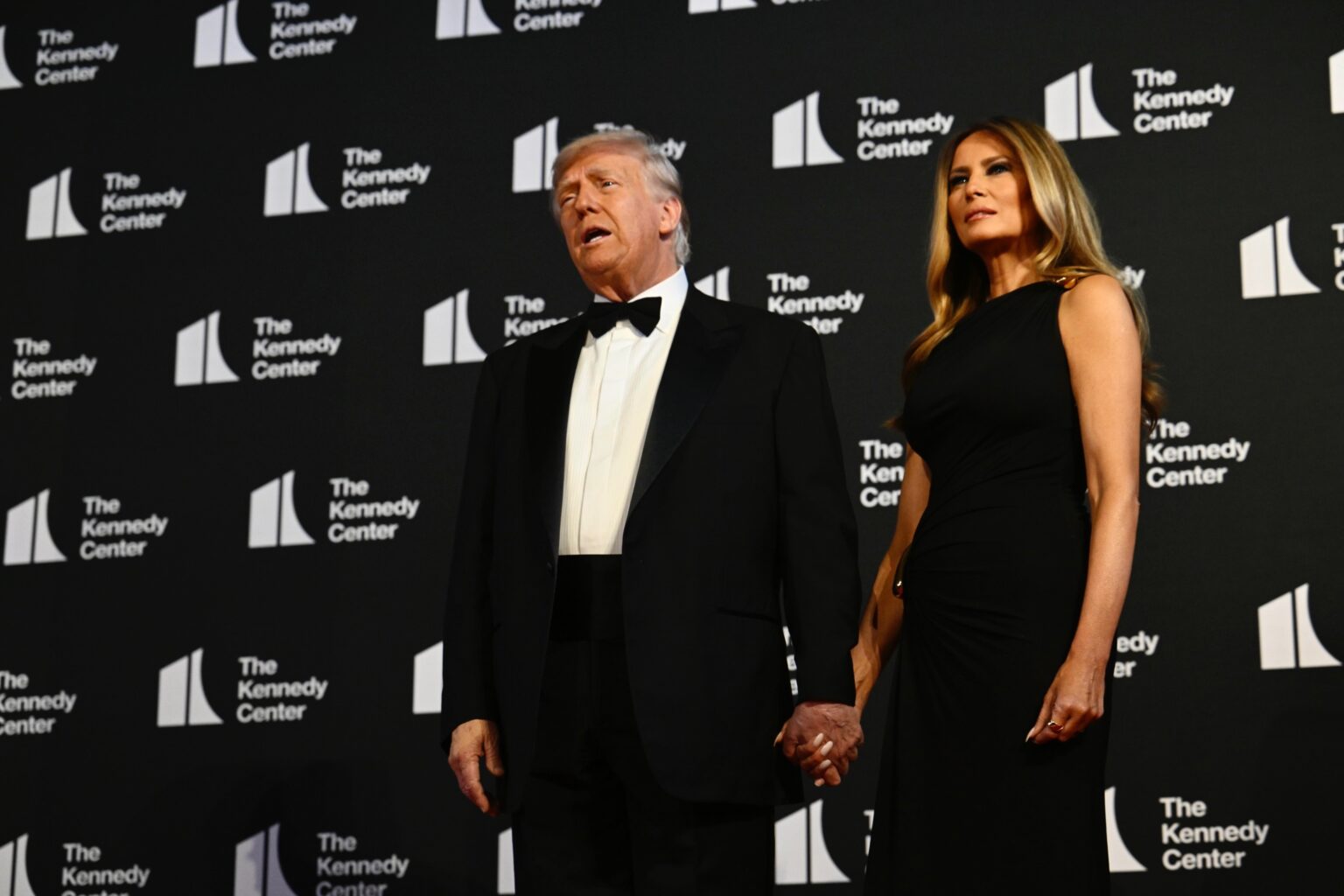President Trump’s Strategic Takeover of the Kennedy Center: A New Chapter in Arts and Politics
In a move that blurred the lines between politics and culture, former President Donald Trump orchestrated a significant reshaping of the Kennedy Center’s leadership, installing loyalists and signaling his intent to overhaul its artistic offerings and physical infrastructure. This intervention marked a bold step into the heart of America’s premier arts institution, reflecting broader ambitions to influence cultural narratives.
A High-Profile Cultural Spectacle with Political Undertones
On a recent Wednesday evening, Trump made a conspicuous appearance at the Kennedy Center, not as a casual visitor but as a key guest in a private box, attending a performance of the acclaimed musical “Les Misérables.” The event was more than just a theatrical outing; it was a carefully staged spectacle aimed at rallying support and raising funds amid financial challenges faced by the center. His presence was designed to symbolize a new era of leadership, with the event resembling a Hollywood premiere, complete with a crowd of officials and supporters.
The Political Significance of the “Les Misérables” Performance
“Les Misérables,” based on Victor Hugo’s 1862 novel, is renowned for its themes of revolution, justice, and the fight against oppression-resonating deeply with Trump’s populist rhetoric. The musical’s iconic anthem, “Do You Hear the People Sing?” has historically served as a rallying cry for resistance and collective action. Trump, who has long identified with themes of populism and anti-establishment sentiment, has publicly expressed admiration for the show, viewing it as a reflection of his political stance.
His 2016 campaign famously invoked the song, aligning it with his message of standing up for the “deplorables” and the “silent majority.” Critics, however, interpret his association with the musical as emblematic of a desire to evoke revolutionary imagery, contrasting sharply with his recent actions to consolidate control over the Kennedy Center.
The Political Climate and Public Response
The event unfolded against a backdrop of heightened political tensions. Just days prior, Trump had deployed the Marines and National Guard to suppress protests in Los Angeles over immigration raids, illustrating a hardline stance on immigration enforcement. Meanwhile, anti-Trump groups prepared “No Kings” rallies nationwide, emphasizing resistance to perceived authoritarian tendencies.
Despite the grandeur of the event, not all attendees were enthusiastic about Trump’s involvement. Some expressed disappointment, hoping simply to enjoy the performance without political distraction. One ticket-holder, who had purchased seats months earlier, voiced concern about the spectacle overshadowing the art. Others openly distanced themselves, emphasizing their desire for a genuine theatrical experience.
The Kennedy Center’s Turbulent Transition
Trump’s takeover of the Kennedy Center began in February, when he dismissed board members appointed by the previous administration and replaced them with loyalists, including Richard Grenell, a close confidant. The new leadership swiftly moved to appoint Trump as chairman and dismissed longtime president Deborah Rutter. Trump’s public statements on social media suggested ambitions to restore the center’s “Golden Age,” criticizing its programming for including shows he deemed inappropriate, such as drag performances targeting youth.
This upheaval has triggered a significant exodus of artists and patrons. Notable figures like Ben Folds, Renée Fleming, and Shonda Rhimes have resigned from advisory roles, while productions such as “Hamilton” and bands like Guster have canceled engagements. Internal documents reveal a sharp decline in ticket sales, with subscriptions dropping by approximately 36%, equating to a loss of around $1.6 million for the upcoming season.
Fundraising and Future Prospects
Wednesday’s event also served as a major fundraising effort, with some donors paying up to $2 million for exclusive experiences, including premium seats, VIP receptions, and photo opportunities with Trump. The goal was to revitalize the center’s financial standing and restore its cultural prominence. Trump expressed optimism, claiming the center would emerge “better than ever,” despite ongoing challenges.
He dismissed criticism from artists boycotting the event, asserting that the fundraiser had already raised $10 million, and downplaying the protests as inconsequential. His focus remains on projecting strength and resilience, framing the center’s revival as a personal and national priority.
Trump’s Enduring Love for Musical Theater
Beyond politics, Trump’s affinity for musical theater has been a consistent theme throughout his life. His playlists often feature classics like “Phantom of the Opera” and “Cats,” and he has publicly expressed admiration for “Evita,” a musical about a charismatic leader’s rise to power. Trump’s childhood was marked by musical education, including flute lessons, which he credits with shaping his appreciation for music’s energizing power.
He has recounted being told as a child that he was a musical prodigy, a claim he maintains with pride. Trump believes music energizes and unites people, often curating playlists for his rallies and residence at the White House. His favorite tracks include “YMCA,” which he describes as “the gay national anthem,” a song he claims gets crowds moving and boosts morale.
The Cultural and Political Legacy
Trump’s engagement with the arts, especially his recent efforts to control and influence the Kennedy Center, exemplifies a broader strategy to intertwine cultural institutions with political power. His actions have sparked debate about the role of art in society and the extent to which political figures should influence cultural venues.
As the Kennedy Center navigates this turbulent period, its future remains uncertain. Will it recover its former glory, or will it become a symbol of political spectacle? The coming months will reveal whether Trump’s vision for the arts will foster renewal or deepen divisions within America’s cultural landscape.

